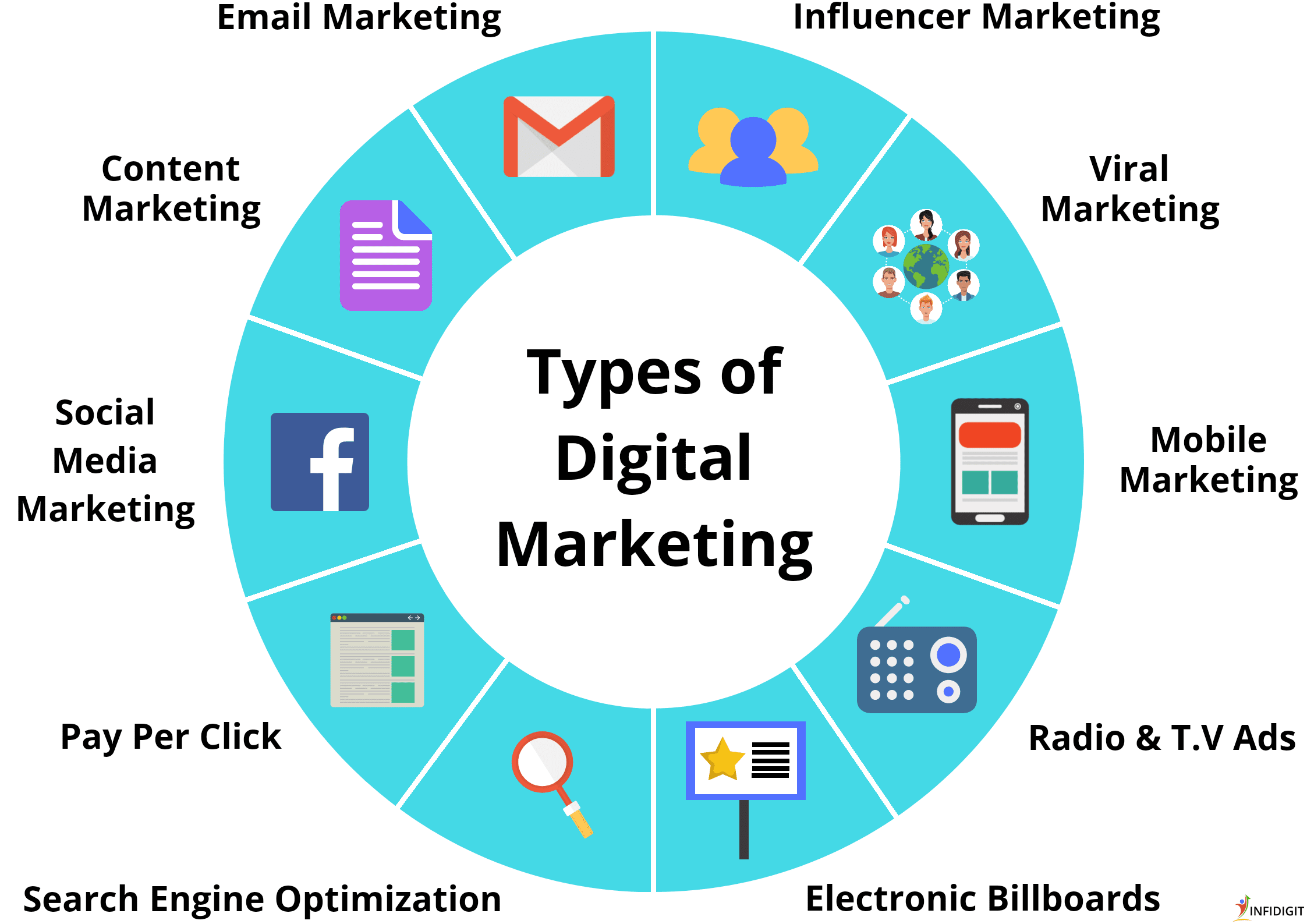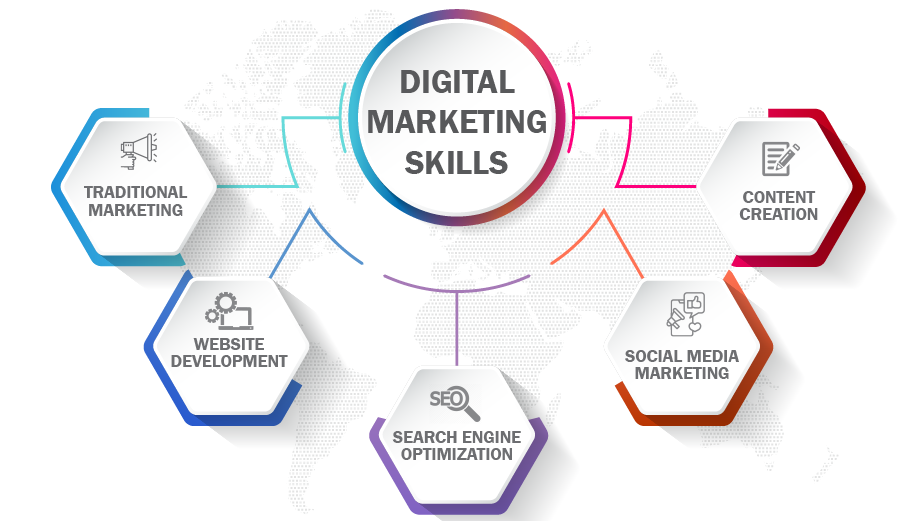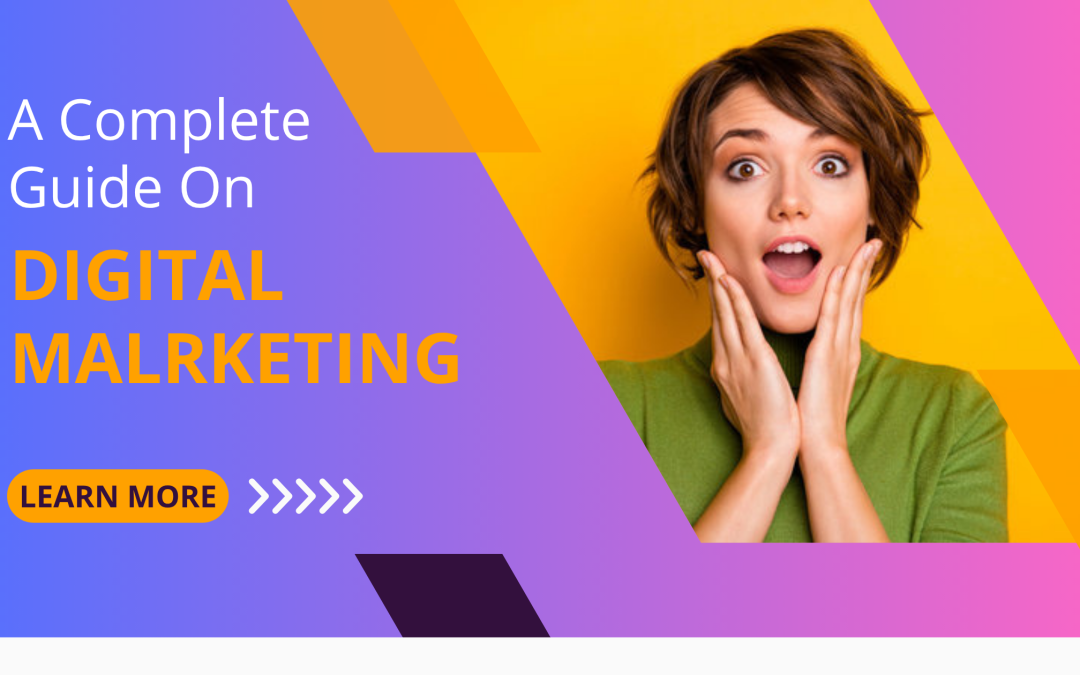In today’s hyper-connected world, digital marketing isn’t just an option, it’s the cornerstone of modern business strategy. As consumer behavior shifts to mobile-first experiences, personalized content, and omnichannel engagement, marketers must evolve to stay relevant.
From startups to global enterprises, everyone is leveraging digital platforms to attract, engage, and convert audiences. But how does digital marketing work, and how can you excel in it in 2025?
This guide covers everything you need to know from strategy to skills, platforms to KPIs, and even ethical concerns like bias in AI-driven campaigns. Let’s begin.
What Is Digital Marketing?
Digital marketing is fundamentally defined as the strategic application of various digital channels including websites, mobile applications, social media platforms, search engines, and other internet-based tools to promote and sell products and services.
While it shares many foundational principles with traditional marketing, its digital nature offers distinct advantages in engaging consumers and understanding their behavior.
Companies frequently integrate both traditional and digital marketing techniques into their overall strategies, recognizing the synergistic potential of a holistic approach.
Key Takeaways
- Digital marketing promotes products and services through channels such as websites, mobile devices, and social media platforms.
- Digital marketers have a number of tools to measure the effectiveness of their campaigns.
The Evolution of Digital Marketing: A Historical Perspective
The rise of the internet in the 1990s transformed marketing, with email emerging as the first major digital tool. Soon after, search engines like Netscape enabled visibility through tags and keywords.
Social platforms such as Facebook revolutionized targeting by leveraging user data, while smartphones expanded reach to on-the-go consumers 76% of whom made mobile purchases by 2022 (Pew Research).
Unlike traditional advertising, digital marketing is interactive, requiring continuous engagement. Its rapid evolution demands constant learning and adaptability, making ongoing skill development essential for staying relevant in a landscape where new tools, platforms, and trends emerge at an accelerating pace.
How Digital Marketing Works
Digital marketing isn’t just about running ads or posting on social media — it’s about guiding your audience through a well-defined customer journey that builds trust, delivers value, and drives action. This journey is typically broken down into four key stages: Attract, Engage, Convert, and Delight.
Let’s explore each step in more detail:
1. Attract
The first step is grabbing the attention of potential customers. This is where strategies like Search Engine Optimisation (SEO), content marketing, paid ads, and social media come into play.
By creating valuable, relevant content—such as blog posts or videos—and ensuring it’s easy to find on platforms like Google or Facebook, businesses draw users in naturally.
For example, a company selling eco-friendly skincare products might optimise its website to rank highly for searches like “natural face wash Australia” or run targeted Google Ads to reach people actively searching for skincare solutions.
2. Engage
Once visitors arrive, the goal is to keep them interested. Engaging content such as how-to guides, personalised email newsletters, or interactive quizzes can create meaningful connections. Personalisation plays a big role here; when customers receive information or offers tailored to their preferences and behaviour, they’re more likely to stay involved and trust the brand.
3. Convert
Converting engaged prospects into customers involves encouraging them to take action—whether that’s making a purchase, signing up for a trial, or requesting a consultation.
Techniques such as lead nurturing via targeted emails, retargeting ads reminding users of products they viewed, and optimising website elements to reduce friction (known as Conversion Rate Optimisation or CRO) help improve this stage.
For instance, a skincare brand might retarget users who viewed a particular product with special offers to nudge them toward buying.
4. Delight
The journey doesn’t end at purchase. Delighting customers through post-sale communication, loyalty programs, or helpful follow-ups builds long-term relationships and encourages repeat business.
Happy customers often become brand ambassadors, sharing positive reviews and referring others, which fuels the cycle all over again.
In essence, digital marketing provides a seamless experience tailored to each stage of the customer journey, creating value for both the business and its audience.
What are the core types of digital marketing?
Digital marketing comprises multiple strategies and channels. Each has a unique role in the customer journey.

1. Search Engine Optimisation (SEO)
SEO focuses on improving a website’s visibility in search engine results like Google, Bing, and Yahoo. It involves optimising keywords throughout the website content, improving site speed and user experience, and building authoritative backlinks from other reputable websites.
The goal is to rank higher for relevant search queries so that potential customers can easily find your business when searching online. SEO is a long-term strategy that builds organic traffic and credibility, making it cost-effective compared to paid advertising.
Techniques include on-page SEO (content and meta tags), technical SEO (site architecture), and off-page SEO (link building).
2. Content Marketing
Content marketing involves creating and sharing valuable, relevant, and consistent content to attract and engage a target audience. This can include blog articles, videos, infographics, podcasts, and eBooks.
The purpose is to provide helpful information that answers customers’ questions, builds trust, and positions your brand as an authority.
Effective content marketing improves brand awareness and drives organic traffic to your site. By addressing customer pain points and interests, content encourages deeper engagement and nurtures leads through the sales funnel.
3. Pay-Per-Click Advertising (PPC)
PPC is a paid advertising model where businesses display ads on search engines or social media platforms and pay only when a user clicks the ad. Google Ads is the most popular PPC platform. These ads appear on search results pages or websites within ad networks.
PPC enables precise targeting by keywords, demographics, location, and device, allowing advertisers to reach potential customers actively searching for products or services.
PPC campaigns can deliver immediate traffic and measurable results, making it ideal for time-sensitive promotions or testing new offers.
4. Social Media Marketing (SMM)
SMM uses social media platforms such as Facebook, Instagram, LinkedIn, X (formerly Twitter), and TikTok to promote brands, products, or services. It involves creating content, engaging with followers, running paid ads, and building online communities.
Social media allows direct interaction with customers, increasing brand loyalty and awareness. Platforms offer advanced targeting options for ads based on user interests, behaviours, and demographics.
SMM is vital for storytelling, customer service, and tapping into viral trends that can dramatically boost visibility.
5. Email Marketing
Email marketing is the practice of sending targeted messages like newsletters, product announcements, promotions, or personalised recommendations directly to a subscriber’s inbox.
It remains one of the highest ROI digital marketing channels due to its direct reach and personal nature. Effective email marketing involves segmenting audiences, crafting compelling subject lines, and automating sequences to nurture leads or retain customers.
It helps maintain ongoing relationships and encourages repeat purchases through timely, relevant communication.
6. Affiliate Marketing
Affiliate marketing is a performance-based strategy where businesses reward affiliates (partners or influencers) for driving traffic or sales through their marketing efforts.
Affiliates promote products on blogs, social media, or websites using special tracking links. When users make a purchase or complete a desired action, the affiliate earns a commission.
This model helps companies expand reach with minimal upfront cost, while affiliates monetize their audience. Transparency and trustworthy partnerships are key to successful affiliate marketing.
7. Influencer Marketing
Influencer marketing involves partnering with individuals who have large or engaged social media followings to promote a brand or product. Influencers create authentic content showcasing products, often generating higher trust than traditional ads.
This approach works well for brands targeting niche audiences or younger demographics. Selecting the right influencer whose values align with your brand and measuring campaign effectiveness are critical.
Influencer marketing can boost brand awareness, engagement, and conversions through relatable storytelling.
8. Mobile Marketing
Mobile marketing targets consumers through their mobile devices via SMS, in-app messaging, push notifications, and mobile ads. Given the growing dominance of smartphones, reaching users where they spend much of their time is crucial.
Mobile marketing campaigns can be location-based, highly personalised, and interactive. Techniques include geo-targeting, mobile-friendly content, and optimising user experience on smaller screens.
Timely mobile marketing improves customer engagement and drives immediate responses, such as coupon redemption or event sign-ups.
9. Video Marketing
Video marketing uses video content on platforms like YouTube, Instagram Reels, TikTok, and websites to communicate brand messages, demonstrate products, or entertain audiences.
Videos are highly engaging and can explain complex ideas quickly. They improve SEO rankings and increase time spent on sites. Businesses use videos for tutorials, testimonials, product launches, and live streams.
With mobile consumption rising, short-form and live video content have become especially powerful tools for connecting with audiences in authentic ways.
10. Marketing Automation
Marketing automation leverages software tools like HubSpot, Mailchimp, or Marketo to automate repetitive marketing tasks such as email campaigns, social media posting, and lead scoring.
Automation enables marketers to deliver personalised content at scale and nurture leads through tailored customer journeys. It improves efficiency, ensures consistent communication, and provides valuable analytics on campaign performance.
By automating routine processes, businesses can focus more on strategy and creative tasks while maintaining timely, relevant contact with prospects and customers.
What are the key performance indicators (KPIs) in digital marketing?
Digital marketing is only as effective as the metrics you track. Here are vital KPIs:

- Website Traffic: Total users and where they come from (organic, paid, referral).
- Conversion Rate: Percentage of visitors who take a desired action (purchase, sign-up).
- Click-Through Rate (CTR): % of people who clicked your link from total impressions.
- Cost Per Click (CPC): Amount spent per ad click.
- Cost Per Lead (CPL): Total marketing spend divided by the number of leads generated.
- Customer Acquisition Cost (CAC): Cost to acquire one customer.
- Return on Ad Spend (ROAS): Revenue generated per dollar spent on ads.
- Bounce Rate: % of users who leave your site without interacting.
- Email Open and Click Rates: For measuring campaign effectiveness.
Use tools like Google Analytics, Hotjar, and Meta Ads Manager for accurate tracking.
How is digital marketing different from traditional marketing?
Digital marketing is data-driven, interactive, and immediate. In contrast, traditional marketing uses static, broad messaging (TV, print) that can’t be measured in real-time.
| Feature | Digital Marketing | Traditional Marketing |
| Cost | More affordable | Often expensive |
| Measurability | Highly trackable | Hard to measure |
| Targeting | Highly specific | Broad |
| Engagement | Two-way, interactive | One-way communication |
| Speed of Results | Faster feedback loops | Slower |
What are the biggest challenges in digital marketing?
- Constant algorithm changes on platforms like Google and Instagram.
- Increased competition, especially for high-value keywords.
- Privacy regulations (like GDPR and Australia’s Privacy Act).
- Ad fatigue and banner blindness.
- Platform dependency (e.g., relying too much on Meta or Google).
To succeed, businesses must remain agile, monitor performance, and adopt an always-learning mindset.
What are the benefits of digital marketing for Australian businesses?
- Reach a broader yet targeted audience across Australia or globally.
- Scale campaigns easily, adjusting budget and targeting as needed.
- Get real-time insights into what works and what doesn’t.
- Boost ROI through measurable results and cost-efficient strategies.
- Build trust and credibility through content, reviews, and consistent brand presence.
What are the top digital marketing trends in 2025?
- AI and machine learning are automating targeting, bidding, and personalisation.
- Voice search optimisation is vital due to smart speakers and mobile usage.
- Short-form video continues to dominate via TikTok, Instagram Reels, and YouTube Shorts.
- First-party data is replacing third-party cookies.
- Sustainable marketing focuses on purpose-driven campaigns and ethical messaging.
- Generative content tools like ChatGPT and Canva AI are being widely adopted.
What skills are needed in digital marketing today?

To thrive as a digital marketer, you’ll need a mix of technical and creative skills:
- SEO and SEM skills: Understand search engine algorithms and ad platforms.
- Content writing: Craft engaging, conversion-focused text.
- Analytics & reporting: Interpret data using Google Analytics, Looker Studio.
- Social media management: Knowing what to post and when.
- Email marketing: Automation, segmentation, and A/B testing.
- CRM systems: HubSpot, Salesforce, ActiveCampaign.
- Basic design: Using Canva, Photoshop, or Illustrator.
- Communication: Presenting ideas clearly across teams and to clients.
Soft skills like adaptability, creativity, and curiosity are just as important.
How can you become a digital marketer in Australia?
You don’t need a formal degree, but you do need hands-on experience and curiosity. Here’s a step-by-step roadmap:
- Start with free online courses (Google Skillshop, Meta Blueprint, HubSpot Academy).
- Build a portfolio — volunteer, freelance, or start a blog.
- Choose a niche — SEO, email, social, paid media, or analytics.
- Get certified — in Google Ads, Analytics, and others.
- Stay updated — follow industry blogs like Moz, Neil Patel, and Social Media Examiner.
- Join local communities — attend meetups, webinars, and LinkedIn groups.
How Do You Build an Effective Digital Marketing Strategy?
A solid strategy starts with clear steps:
- Set SMART Goals: Specific, Measurable, Achievable, Relevant, and Time-bound.
- Understand Your Audience: Research demographics, interests, pain points.
- Choose Channels Wisely: Based on where your audience spends time and your budget.
- Create a Content Plan: Define topics, formats, and publishing schedules.
- Allocate Budget: Distribute resources across paid, owned, and earned media.
- Measure and Optimise: Regularly review KPIs and tweak campaigns.
A clear strategy ensures resources are used efficiently and results improve over time.
Final Thoughts: Why Digital Marketing Is Essential and How to Keep Learning
Digital marketing is a dynamic and indispensable part of business growth in Australia and worldwide. Whether you’re a business owner wanting to increase sales or a budding marketer aiming to develop new skills, understanding digital marketing fundamentals and staying updated with trends is vital.
Start with foundational certifications from Google, HubSpot, or Meta, build real-world experience, and never stop learning. As AI and technology advance, those who adapt quickly will reap the greatest rewards.
Frequently Asked Questions
Is SEO part of digital marketing?
Yes, SEO is a fundamental digital marketing channel focused on increasing organic search visibility.
How much does digital marketing cost?
Costs vary widely depending on strategy, channels, and business size — from a few hundred to thousands of dollars monthly.
Which digital marketing platform is best?
It depends on your audience. Google Ads and Facebook are popular, but LinkedIn suits B2B, TikTok excels with younger demographics.
How long before digital marketing shows results?
PPC ads can deliver immediate traffic, but SEO and content marketing typically take 3–6 months to show significant results.
Ready to grow your business with digital marketing?
Start by defining your goals today, experiment with key channels, and track your progress closely. The digital world is waiting.

